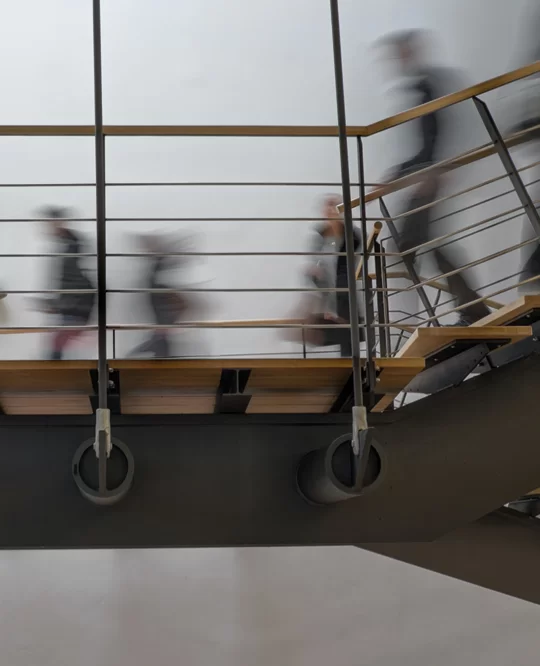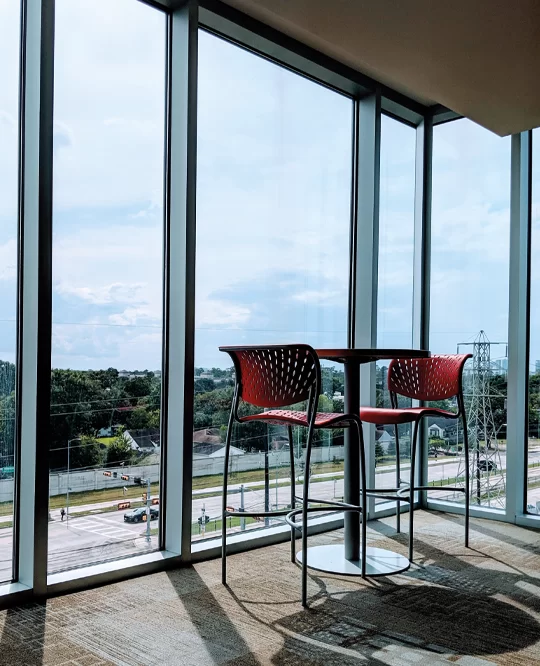Page/ Investigates Glass-To-Wall Ratios
Designers used FenestraPro to experiment with the implications of a range of glass to wall ratios while exporting data to comparatively analyze the results.
Designers used FenestraPro to experiment with the implications of a range of glass to wall ratios while exporting data to comparatively analyze the results.

Using Frit Patterns

No Reliance On Sustainability Consultants

In Late Stages of Design
Page/ is a leading global design firm and hugely influential in design across multiple sectors. The Higher Education Team at Page/, Page/academic, provides design solutions that are particular and responsive to academic programmes and economics. From campus planning to higher education, Page/academic ranked 13 in 110 by Building Design + Construction in 2016.


As part of a campus masterplan in the northeastern part of Houston, this building had a fixed orientation. Using a single day of peak solar load, the designers efficiently experimented with a range of glass to wall ratios – from 10 % to 90% – to see the implications of their design decisions in real-time. The designers then exported the data calculations to FenestraPro Snapshots to comparatively analyse the results. In consideration of Prescriptive Energy Codes IECC-2015 and the threshold where shading becomes beneficial, FenestraPro graphically demonstrated the optimal glass-to-wall ratio per façade and provided detailed solutions.
Carried out by a Building Performance Analyst as part of the Higher Education design team at PageThink, this exercise using FenestraPro led to data-driven decision-making. This investigation into glass-to-wall ratio, which can often take days, was carried out in a matter of hours and informed the team of limits and opportunities of varying glazing solutions for each façade.



”FenestraPro gave us rapid and comprehensive feedback for a competition proposal that we would have otherwise not run. The ability to parametrically generate windows and shading was a huge time saver, which enabled us to demonstrate a rich level of detail within the competition deadline.
Because of FenestraPro’s instant feedback, we finally have a tool that works well with our performance-based design workflows, which are always iterative in nature.
Shreejay TuladharBuilding Performance Analyst at PageThink
Define a Team with invited users for project collaboration, and to share project reports, building codes and glazing specifications.
Export envelope geometry and material specifications to an Excel spreadsheet for review and comparison.
Quickly set a Window to Wall Ratio to be applied automatically to all facades on the model to check compliance, thermal performance, or outline internal performances such as daylighting and heat gains.
Control glazing zones on both conceptual and detailed models. Define percentage values to generate glazing areas on detailed models or create notional glazing zones on conceptual models.
Autodistribute glazing to equalise Heat Gains on all orientations of a Conceptual model, or add glazing elements to a Detailed model by defining parameters such as WWR, glazing geometry or internal performances.
Calculate shading effects to include the impact of shading devices and other features on your project. Quantify the effects effects from shading elements and run a Shading Animation to visualize the impacts throughout the year.
Control the properties of components within nested curtain panels by material, and use assembly values, (including framing, mullions and edge of panel values) for a detailed thermal performance of curtain walls in the model.
Simulate a fritting effect on glazed model elements and apply to update Solar Loads and Daylight results. Dynamically adjust transparency and coverage to review various options.
Understand how glazing geometry and material properties will affect thermal, solar heat gains and daylighting, and toggle between Peak and Average Values.
Create custom Groups of Facades/Surfaces to quickly navigate and focus on critical areas of the project.
Select glazing products from leading manufacturers globally from our database of 1000+ IGUs. Sort, search and filter by SHGC, VLT or U-value. Apply to properties directly to your Revit model to understand performance in real-time.
Optimize glazing selection from our database of 1000+ IGUs from leading manufacturers globally, based on target values for thermal, solar heat gains and daylighting.
Define thermal values for elements in Conceptual Massing Environment to comply with target Energy Codes, or automatically apply target values to update all element types for compliance.
Create custom IGU assemblies through our partner's Glazing Configurators, and import to FenestraPro to apply directly to the Revit model.
Link from glass products in the database to product pages online to review specifications and access EPDs.
Export BIM data to our Reporting Platform for data analysis, comparative analysis and creating customizable reports to share with your teams or clients.
Export envelope geometry and material specifications to an Excel speadsheet for review and comparison.
Identify and resolve issues in the Revit Energy Analysis Model before analysis to ensure a robust and best practice Revit envelope model.
Define target values for maximum allowable glazing, or quickly calculate the optimal solution based on thermal performances. This glazing can be applied directly to the Revit model to see internal performances.
FenestraPro Learning is an agile learning platform that provides users with short courses on getting started, conceptual and advanced functionality and AIA courses for free credits.
Define prescriptive values for categories of elements, including Roofs, Floors, Walls and Glazing. Compare actual element values for compliance status.
Calculate shading effects to include the impact of surrounding buildings and other features on your project. Run a Shading Animation visualize the impacts of shading on the model throughout the year.
Isolate solar irradiance by orientation, then review values that require attention. Charts compliment selections to display colour coded results.